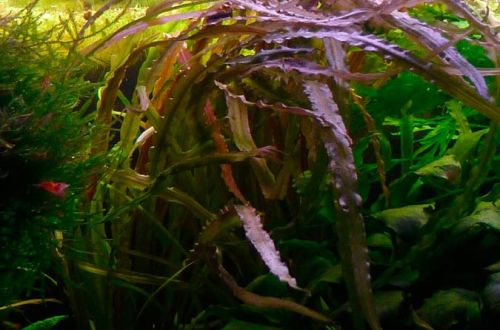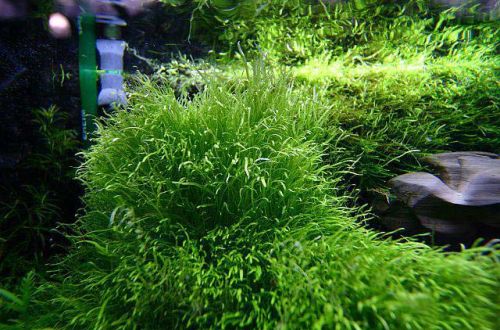
Cryptocoryne Walker
Cryptocoryne walkeri, scientific name Cryptocoryne walkeri. The plant comes from Southeast Asia, where it grows on only one island – Sri Lanka. This is a difficult species to identify. It is closely related to other Cryptocorynes found on the island (Cryptocoryne beckettii, Cryptocoryne wendtii and Cryptocoryne undulata), forming hybrids with some of them, and also has several varieties that were previously considered separate species and are still known in the aquarium hobby by their own names, not as one of the forms of Cryptocoryne Walker.
Cryptocoryne walkeri “legroi” (first image) – was first described in 1970 as Cryptocoryne legroi (Cryptocoryne legroi) and is often seen commercially under this obsolete name. When submerged, the plant has elongated, linear leaves with an olive green, glossy upper surface and a red or reddish brown underside. The edge of the leaf blade is wavy. The height of the bush reaches 10-15 cm.
Cryptocoryne walkeri “lutea” (second image) – was first described in 1931 under the name of Yellow Cryptocoryne (Cryptocoryne lutea). Most often found on sale under this name. Underwater leaves are linear in shape, 8–12 cm long and 2–3 cm wide. The upper side is dark green, the lower side with reddish hues. The base of the leaf blade is slightly rounded, the edge has light wavy edges. Unlike other varieties, the petioles are quite long. Since 2011, breeding forms with intense purple and green-brown leaves have been bred.
Cryptocoryne walkeri ‘Hobbit’ (third picture) is a relatively new cultivar, marketed as a variety of the yellow Cryptocoryne with the prefix ‘Hobbit’ (Cryptocoryne lutea ‘Hobbit’). After clarification of the classification, it was transferred to the group of Cryptocorynes Walker. Forms compact bushes. Purple lanceolate leaves.
All of these varieties are not demanding in their care and perfectly adapt to various conditions (hydrochemical composition of water, illumination). If they grow in aquariums with fish, then the introduction of dressings is usually not required.





